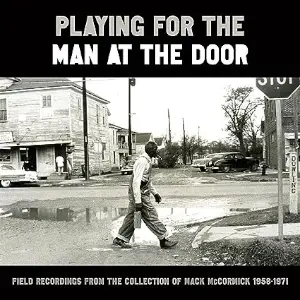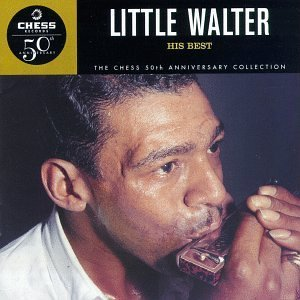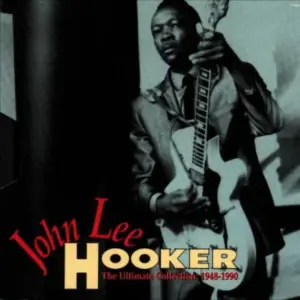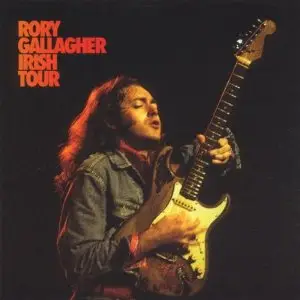Twenty Best Blues Albums
If you were to own only 20 Blues albums, which would they be?
Let us help you decide. Here is our list of the BEST BLUES RECORDS ever.
These albums, as well as being the greatest music ever heard, also tell a story.
Before the 60's, most Blues records sold as singles, so most of the selections here are compilation albums. After the 60's we have selected the outstanding album or the live set which shows the best of the artist's talents.
Our list covers all ages of Blues Music, from the early “Country Music” styles through to the electric Blues of the City. The Blues has traveled around the world and back again, and our list reflects this. Sonny Boy II may have stated “These white boys want to play the Blues so bad... and they do!” but to our ears they sound pretty good.
Blues Originators.
'The Blues' originated as a style of local folk music from around the Mississippi Delta as the 20th Century began. Its influence was spread across the Southern States by travelling shows and 'wandering songsters' like Lead Belly and Blind Lemon Jefferson, who sang Blues songs along with folk ballads, spirituals and Ragtime ditties, and both used Blues forms in their own compositions in their later recording careers.
In 1920, the first Blues song was recorded by Mamie Smith, and when 'Crazy Blues' sold close to a million copies all the record companies looked for their own Blues Diva. The greatest of these Divas was Bessie Smith, inspired by her mentor Ma Rainey, and she was a rôle model for many female Blues stars to follow.
Back in the Delta, Charley Patton was setting an example himself, inspiring other Bluesmen like Son House, Robert Johnson, Howlin' Wolf and many more. By the end of the decade, most of these important players had made records, and in the 30s Johnson himself revolutionised the Blues with his exuberant, polyrhythmic guitar style, and his songs provided a 'blueprint' for future generations.
As African-Americans moved from rural poverty to the cities in the 'Great Migration' after WWI, Big Bill Broonzy was a central figure on the 30s Chicago scene. He helped to develop the idea of a Blues Band, with guitar, piano and harp, and incorporated jazz-influenced complexity into the urban sound.
As an Amazon Associate I earn from qualifying purchases.
Blind Lemon Jefferson was one of the first Bluesmen to record his own material, rather than re-telling popular songs. These 28 tracks are some of the earliest Blues recordings ever made so, despite re-mastering, they might sound a little scratchy to modern ears, but there is nothing wrong with the quality of the music. From famous songs like 'Match Box Blues' and 'See My Grave is Kept Clean' to novelties and religious tunes, this album gives fine examples of Lemon's slide guitar and boogie styles.
The Empress of the Blues, Bessie Smith was a genuine superstar in the 20's and a Force of Nature all her life. She put the Blues on stage and proceeded to knock 'em in the aisles. From her first recordings as a 'Blues Diva' in 1923 to her final sessions, this fully rounded collection of 36 tracks includes collaborations with Louis Armstrong, Coleman Hawkins and Benny Goodman. Bessie was the first major 'crossover' artist, whose music was played in 'speakeasies' all over The States.
This Box-set is unbelievable value: all the songs from the Grammy winning Reverent collection at a third of the price! The 92 tracks here give a comprehensive account of how the original Delta Blues sounded at the hands of a Master. With a voice echoed by Wolf and Beefheart, Charley Patton set the standard for much that followed, and he is joined by Son House, Willie Brown and Son Sims on some tracks. The performances are electrifying and careful re-mastering has made this a very listenable set of albums.
Lead Belly was the quintessential old-time travelling songster, with an enormous and varied repertoire of folk, blues, ballads, work songs, prison songs, political songs and children's ditties. His career fully spanned the first half of the twentieth century, from the cat-houses of Shreveport to the stages of Paris. This 36 track compilation covers most of Lead Belly's styles, which would be typical of early wandering Bluesmen. More of the same fantastic quality on further volumes- 'Bourgeois Blues' & 'Shout On'.
King of the Delta Blues. Legend says this haunted young man sold his soul to the Devil in exchange for his extraordinary skills on guitar. Robert Johnson's complex, polyrhythmic technique influenced every generation of guitarists that followed, and he wrote some enduring Blues classics. His total recorded output was confined to two sessions in Texas in Nov. '36 and June '37, comprising 29 songs. The 42 tracks here include some alternate versions, and are arguably the most influential music of the whole 20th Century.
Big Bill Broonzy was the Main Man on the Chicago Blues scene in the inter-war years, fostering the transition from rural to urban Blues. His own considerable songwriting skills and huge repertoire reflect this change, and his flatpicking guitar style and great voice made him a star of the Folk/Blues revival of the fifties. This bargain, re-mastered double CD has his finest album, 'Big Bill's Blues' plus three more collections, totalling 45 tracks, which show the breadth of the man's talent.
One question that often comes from new fans of the blues is: Where should I begin? Whether by accident or design, archivist and musicologist Mack McCormick has provided an answer to that question with a compilation of his early field recordings of the blues called ‘Playing for the Man at the Door.’
Subtitled ‘FIELD RECORDINGS FROM MACK MCCORMICK’S COLLECTION 1958-1971,’ this album tells us everything we need to know about the birth of the blues. While the genre existed before McCormick hit play on his recording device, ‘Playing for the Man at the Door’ does document the beginning because many of the artists featured here are the ones responsible for helping the music transition from a folk genre to one shared by millions through the magic of radio and record.
There are names here not easily recognized by even the most knowledgeable of blues fans. But the history lesson available on ‘Playing for the Man at the Door’ comes not through a dry recitation of names and dates, but through a capturing and sharing of the feeling the makes the blues as alive and vibrant today as it was since its inception. You can hear the sense of joy, torture and release in every note these artists are delivering. Its as if they’re well aware of the shared sense of exuberance this music would spark decades after being recorded.
Finding stand out tracks is truly impossible. Even the lesser impressive songs are stunning. My challenge to the listener is to find their own favorites as they discover the roots of the music we call the blues.
The Golden Age.
When Muddy Waters arrived in Chicago from the Delta in 1942, he realised the Blues would have to LOUD in the noisy city. When he plugged himself in, Electric Blues was born and his big selling records on the Chess label meant everyone quickly followed him. His biggest rival at Chess was Howlin' Wolf, whose voice could move mountains, and they competed to see who could get the next big song from writer, bass-player and producer Willie Dixon. The harp player in Muddy's band was Little Walter, and he carved a place of his own in Blues history with his dazzling harp lines, and when Rice 'Sonny Boy II' Miller came to town, he added a whole bag-full of juke-joint tricks to the harp repertoire.
Chicago was not the only place to hear the Blues: in Detroit John Lee Hooker's mesmerising one-chord boogies had people dancing, and in New Orleans their piano and sax driven music had a 'rhumba-boogie' beat. Professor Longhair's funky piano opened the way for Fats Domino and Little Richard to play what became known as Rock'n'Roll when it crossed over into the mainstream.
Over the pond in Europe, post-WWII youth was beginning to appreciate the Blues, and BB King's soulful, sustained guitar notes fired some creative young imaginations.
Modern electric Blues starts here. Born in the Delta and recorded at Stovall’s Plantation by Alan Lomax, Muddy Waters was a revelation when he got to Chicago and plugged himself in. This three album set covers his work over 25 years from his first session in 1947, and mixes the essential singles with rare unreleased tracks to give a comprehensive chronicle of the King of Electric Blues. The list of Muddy's side-men reads like a roster of Chicago Legends, and they support his distinctive guitar work on 72 fantastic tracks.
Little Walter made the Blues harp, or 'Mississippi Sax', an essential part of the Chess Records sound as he played those big, fat tones in Muddy's band. He went on to be a solo star, and the 20 tracks in this compilation are all taken from his hit singles, including 'Juke', 'My Babe', 'Mean Ol' World' and 'Boom, Boom, Out Go the Lights'. These original tracks show off Little Walters unique, pioneering talents that became a blueprint for the Chicago sound that still powers Blues Bands today.
This CD contains Howlin' Wolf's first two albums, 'Moaning in the Moonlight' and the self-titled 'rockin'-chair' album, which were themselves mostly comprised of his singles, so you get the original sounds that shook the world. With his unmistakable voice and wild and scary stage persona, Wolf brought the sound of his mentor Charley Patton to new generations of Blues fans as a superb example of 'cultural transmission'. Even if you have some Wolf on your shelf, the sheer value of this collection makes it a 'must have'.
Rice Miller hung around the Mississippi Delta with Robert Johnson, yet his career lasted long enough to see him play with Eric Clapton and Jimmy Page. In between he drank a lot of whiskey, was a radio DJ for 15 years on The King Biscuit Time show, and wrote and played some of the finest harmonica Blues ever recorded. A consummate showman, with a bag full of juke-joint tricks, these 20 tracks from the sly, laconic maestro include his best known recordings for Chess and have backing from Robert Jr. Lockwood and Buddy Guy.
This is essentially a musical biography of one of the titanic figures in the story of the Blues. His distinctive voice and primitive guitar technique make John Lee Hooker a unique performer. The early, stripped down hits for Modern and VeeJay; the Chess years; 70s collaborations with Canned Heat; his late revival with Bonnie Raitt, they are all here. The 31 tracks on this double-CD trace the journey John Lee, and the Blues, made from the Delta to the city, and on to the whole world.
The much under-rated Professor Longhair pioneered the funky New Orleans piano sound that drove so much early Rock'n'Roll. 'Fess' played his 'rhumba-boogie' piano on these sessions in 1949-53, and you can hear the music of Fats Domino, Allen Toussaint and Dr. John in every line. Backed by spectacular brass arrangements, this is how the Blues got the whole world dancing. If he hadn't been so reluctant to leave his native city, 'Fess' would have been a big star, but his musical influence got everywhere.
No Blues collection is complete without some BB King, and if you plan to own just one live Blues album, this IS the one. Recorded with a wild Chicago audience in 1964, this record was hugely influential. ‘ Nuff said.
European Blues
British kids in the early 60s felt like a downtrodden class, oppressed by rigid social conventions and dull prospects. They took up the language of the Blues and used it to spark a worldwide youth revolution, with music as its main communication. Bands like the Beatles and Rolling Stones were the standard-bearers in this, but Eric Clapton's interpretations of Delta and Chicago Blues were perhaps more inspirational in the long term, and Jeff Beck practically invented Blues-Rock and Heavy Metal on a single album!
This music reverberated around the world and had a huge effect back in America, as new audiences picked up on music that had only been popular in African-American communities. Old Blues players got a chance to record again, (and get paid this time!) and Howlin' Wolf played on 'Shindig'.
Britain was not the only source of new Blues over the water, as Ireland contributed the inimitable talents of Rory Gallagher and the sublime Gary Moore.
Known as ‘The Beano Album’, this opened up the Blues to a new young audience on both sides of the Atlantic. Eric Clapton had left the Yardbirds because he thought they were going ‘commercial’ and this album, recorded with John Mayall’s superb band, is a powerful statement of his intent. Clean production allows the passionate enegy of the music to shine through, and it set a high benchmark for others to aspire to. It's probably no exaggeration to say Blues-Rock starts here, and it's devastating stuff.
The late 60s were a time of experimentation and this album is full of it. When Jeff Beck, Jimmy Page, John Paul Jones, Ronnie Wood and Keith Moon fool around with some Chicago Classics and write some new Blues too, the result is sensational. It laid the foundations of Blues-Rock and Heavy Metal, inspired the formation of Led Zeppelin, and it's still amazingly fresh today. Remastered to get rid of some studio glitches, this essential music has never sounded better. (Not all experiments work, so lets forget Greensleeves: she'd been rolling in the grass!)
And if you plan to own just two live Blues albums, this is the other one! The energy positively crackles from his fingers as Rory Gallagher plays to his home-countrymen, even in the acoustic numbers. Rory was a guitarist of outstanding inventive skills who knew he was 'standing on the shoulders of giants', and he touched the hearts of his audience with his blistering interpretation of the Blues. Combining the best of his own songs with masterly versions of some classic tunes, Rory ‘brings it home’ in style.
Return to the Heartlands
In 60s America, a new audience for the Blues meant that young men like Paul Butterfield, who learned his harp skills in South-side Chicago clubs where he was often the only white face, could sell millions of albums. Buddy Guy was one of the second wave of West-side guitarists who came up at this time, and his work with Junior Wells began after the 'British Invasion' and lasted for decades. When the dust settled, Blues and Blues-Rock had been established as a cornerstone of music, with records in the charts, specialist Blues labels and at least one club in every town.
When Stevie-Ray Vaughan came along in the 80s, the Blues was suffering a period of respite, but his hard-rocking Texas Roadhouse style brought it to the fore again along with new names like Robert Cray and Albert Collins, and even John Lee Hooker had a worldwide hit album.
Willie Dixon said, “Blues is the roots, and all the other music is the fruits.” The legacy of the Blues has penetrated all forms of modern music. It was the basis of Rock'n'Roll; it mingled with Gospel music to give us Soul; it gave a form to Hard Rock; you can even trace the roots of Rap to early 'talking Blues'. It continues to inspire young musicians to experiment with the form, and people like Ben Harper, Joe Bonamassa and The Tedeschi/Trucks Band on keep thrilling huge audiences and selling ship-loads of albums.
In the wake of The British Invasion, Paul Butterfield hired Howlin' Wolf's rhythm section make this landmark album in modern Blues. Adding the twin guitars of Mike Bloomfield and Elvin Bishop, Paul brought the music of his hometown to a new, young, white audience. His heartfelt harp playing, on covers of some Chicago classics and the band's own songs, has the rough and ready quality that shows his passion for the music he had learned from the Legends in those South-side clubs.
Like the end of 'Casablanca', this was the start of a 'beautiful friendship'. Junior Wells and Buddy Guy (in the guise of 'Friendly Chap' for contractual reasons) were feeling free to express themselves and obviously having a great time putting down these priceless sessions. This version of the disc includes a lot of studio banter and several alternate takes, on top of the original 12 tracks. As a document of how Chicago Blues sounded in the mid-60s, it is a superb example. No wonder that 'beautiful friendship' lasted over 30 years.
There can only be only one choice for the definitive Stevie Ray Vaughan album, as it had such a huge world-wide impact. Texas Flood stayed in the charts for six months, an astonishing feat at the time, and the band were so tight from months of playing these songs, it comes over like a club set on a night when they were smokin'. It practically started the 80s Blues revival all by itself, and this 30th Anniversary edition also has a bonus CD of a great gig in Philly in 1983. Essential Blues Rock.
This album is a sublime example of modern Blues-Rock, with a combination of slow, soulful Blues, 'film-noire' soundtracks and good-time boogie numbers. On his ninth studio album, Joe Bonamassa's increasing confidence as a writer, as heard on 'Black Lung Heartache', 'Slow Train' and the title track, allows his songs to touch a nerve in the collective memory, like the best Blues should. It is astounding that, in the new Century, this archaic musical form still gives us such inspiring experiences.




















